Plants to watch out for when exploring Vancouver Island
by OB 2020-10With people exploring the island more than ever before due to COVID-19, what vegetation should they be aware of, look out for and avoid when on their adventures? This playlist will tell you which plants, shrubs, weeds, trees and flowers to watch for when exploring nature around the island.

1In 1 playlists
By OB 2020-10
Vancouver island has a wide range in ecosystems; alpine, mallee, grasslands and grassy woodlands, forests, heathlands and healthy woodlands, inland waters and estuaries, and coasts. With the dominant biome being rainforest, plants that proliferate in wet conditions thrive, while on the southern tip of the island, where little rain falls, species of desert-like plants flourish. As well, the island boasts a large and diverse array of plant populations. Some are fantastic for medicinal purposes and are fun to point out when spotted while others should be avoided altogether. In the video above you can identify a lot of plants that are documented in this playlist - see if you can spot all of them!
1In 1 playlists
By OB 2020-10
Vancouver Island is full of hiking trails, beaches, forests and lakes. Here are some to visit; The Coast Trail in Sooke, Thetis lake in Victoria, Goldstream Provincial Park, Kinsol Trestle Bridge Trail in Cowichan Valley, Strathcona Provincial Park in Comox Valley, Ammonite Falls in the Nanaimo, Maple Mountain Trails in Duncan.
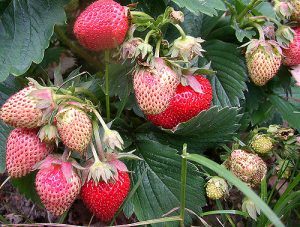
1In 1 playlists
By OB 2020-10
Native Species is a species that is indigenous to a place, meaning that it originated in that place. However, an Invasive species, is a species which is not only nonnative to the ecosystem in which it is found but capable of causing environmental, economic or even human harm. Invasive species also displace native species and disrupt important ecosystem processes. Native species are important to have in ecosystems because they provide shelter and food for wildlife and support pollinators. As well, they help limit the use of pesticides, use less water, keep the air around them cleaner, promote biodiversity and stewardship of our natural heritage, and have been shown to save money in many different ways. (Above is a photo of the Coastal Strawberry a native plant to Vancouver Island)
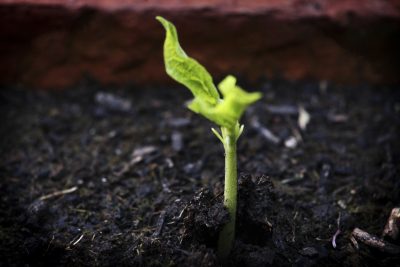
1In 1 playlists
By OB 2020-10
Being able to identify plants you come across while in nature and therefore know if they’re safe or that you should avoid them is an incredibly useful skill. Not only does it help you safety-wise, it gives you appreciation for the variety of flowers, trees, grasses and bushes you might not notice otherwise.

1In 1 playlists
By OB 2020-10
Located on the Southern end of Vancouver Island, Spurge Laurel can be found along roadsides, moist woods, lowland areas and even in domestic gardens. This invasive plant looks similar to the Pacific Rhododendron and can reach heights of 1.5 meters. It has spring-blooming yellow flowers as well as dark berries. The leaves are a deep green and glossy. Toxins are found in the bark and sap and when in contact with skin, it can cause rashes, nausea and swelling of the tongue. The berries, if eaten, have proved to result in comas, or death.
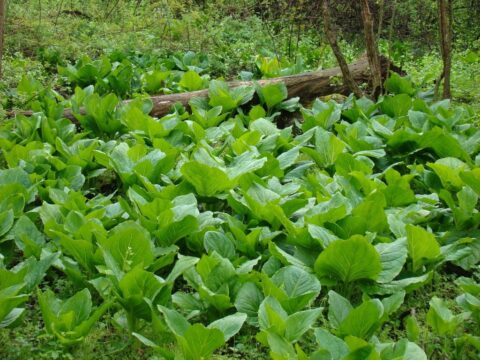
1In 1 playlists
By OB 2020-10
Skunk Cabbage can be found all over Vancouver island however, they prefer wet places such as along streams, swamps and bogs(try Lighthouse Loop trail in Ucluelet). The Skunk Cabbage is a bad-scented plant with big, wide cabbage-like leaves that ( in certain seasons) surround a yellow flower. The roots of the Skunk Cabbage has been used respiratory ailments such as Hay fever, asthma, whooping cough. It’s helpful for nervous disorders and spasmodic problems. The First Nations boiled the root hairs to make a wash for stopping (external) bleeding. A poultice made from the roots can be used for wounds and a poultice made from the leaves can be used to reduce swelling.

1In 1 playlists
By OB 2020-10
Nettle is a hardy plant, that can grow generally anywhere but it prefers nitrogen-rich soils, rich in moisture. It blooms yellow and pink flowers between June and September and can reach 50 - 100 centimeters high. Its stems are upright and rigid while the leaves are heart-shaped with finely toothed and tapered at the ends. As well, the entire plant is covered in small hairs that release stinging chemicals when touched. The stings of stinging nettle are painful to the touch, but when put in contact with a painful area of the body, they can actually decrease the amount of pain in that area. Scientists believe it does this by reducing levels of inflammatory chemicals in the body and by interfering with the way the body transmits pain. It has been used for hundreds of years to treat painful muscles and joints as well as eczema, gout, arthritis and anemia.

1In 1 playlists
By OB 2020-10
The video above shows the increase in Poison Hemlock on Vancouver Island. It was reported by CBC in 2019 and is very informative about the invasive plant, if you wish to learn more.
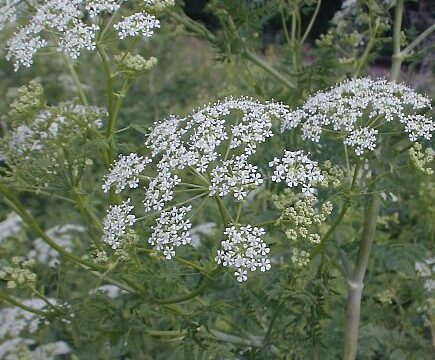
1In 1 playlists
By OB 2020-10
Poison-Hemlock can grow up 5 to 10 feet (2-3m) and grows (often in dense patches) along roads, trails, at edges of fields and damp areas beside streams. This invasive plant can be identified by its hairless, hollow and purplish-red speckled stalk, the white clustered flowers atop the plant and their leaves which emit a musty, unpleasant smell when brushed against. The poison occurs when ingesting any part of the plant such as the seeds, flowers, leaves or fruits. All parts of the plant contain toxic alkaloids that can be fatal even in small doses. These alkaloids can affect nerve impulse transmission to your muscles eventually resulting in respiratory failure. Some of the symptoms are trembling, dilated pupils, muscle pain, convulsions, and burning in the digestive tract.
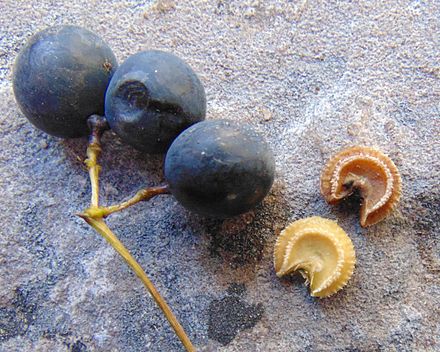
1In 1 playlists
By OB 2020-10
Canada Moonseed appears in thickets, beside streams and along bluffs. It's a climbing vine up to six meters in height. It has green-leaves - containing 3-7 lobes each - and purple/black berries. These berries look very similar to grapes, but moonseed has, as in the name, moon-shaped seeds - very different from Grapes round seeds. Do not ingest these berries as not only do they taste horrible, they can result in convulsions, seizures and possibly death because of their toxic lode of dauricine.
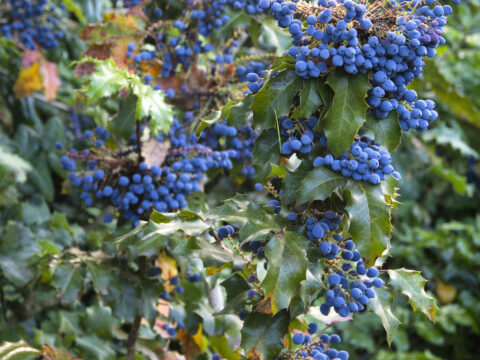
1In 1 playlists
By OB 2020-10
The Oregon Grape can be found all over the West Coast and is abundant all over the island. It tolerates a wide array of soil types and grows best in partial shade. This plant is a shrub that has spiny leaves that resemble holly and have dark blue berries that look like grapes. The roots of this shrub have been used as herbal medicine to treat colds, flu, and yeast infections. The dried root mixed with rubbing alcohol can be used (externally) for treating skin diseases such as psoriasis, eczema, acne and herpes. When made into tea, it is said to stimulate liver functions, treating infections and supporting digestive health - as well as help lower blood pressure and insulin levels.
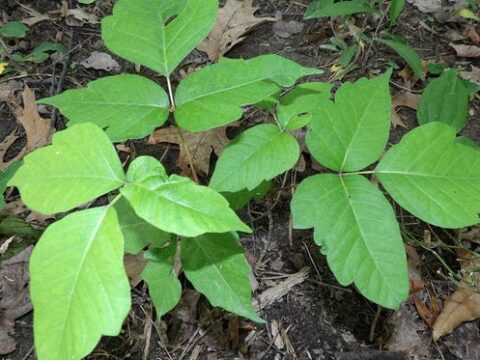
1In 1 playlists
By OB 2020-10
Poison Ivy grows along lakes, rivers, meadows, forest openings, and beaches. This erect shrubs leaves change throughout the seasons from a shiny green in the summer to yellow/orange in the fall to a reddish colour in the spring. The best way to identify this plant is its three leaves. These leaves have notched ends - almost making them look like a flame. There are two leaves on either side and one in the middle at the end of a stem - “leaves of three? Leave it be” is a simple way to remember. The reason to avoid this plant is because a liquid in the plants sap creates a skin rash when touched. This rash can be itchy and last up to weeks
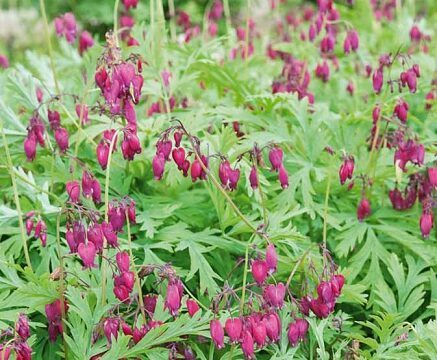
1In 1 playlists
By OB 2020-10
Pacific Bleeding Heart can be found in Coniferous Forests, in moist forests and woodlands, especially near stream banks. It is a native species has fern-like leaves and a heart shaped flower clustered to the ends of the stalks. The roots of this plant are made into a tincture to help calm nerves or a hot compress to help with pain relief and can be applied externally to bruises and sprains

1In 1 playlists
By OB 2020-10
Giant Hogweed can be found at the edges of forests, alongside roads, in fields and forests, beside streams - preferring areas with wet, moist soil and large amounts of sunlight. This invasive species has been spotted near the center of southern Vancouver Island and in Duncan. Giant Hogweed can grow up to 14 feet tall with thick leaves stretching five feet widened large clusters of white flowers in an umbrella-shape atop the plant. The stems are green with small purple blotches and white hairs. The clear, watery sap of the Giant Hogweed contains toxins that can cause severe dermatitis - inflammation of the skin. As well the sap causes serious burns when on skin and exposed to sunlight while if the sap gets into your eyes it can cause temporary blindness. The symptoms will occur within 48 hours and consist of painful blisters that leave purplish scars that last for years.
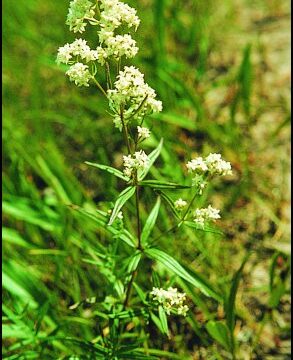
1In 1 playlists
By OB 2020-10
This plant can be found in Strathcona Provincial Park, specifically on the Paradise Meadows Hike and grows on rocky slopes and stream sides. It can be identified by its clumped white flowers, narrow leaves and smooth stem. The leaves of this plant can be eaten raw or cooked while a tea can be made from white flowering stems and is used to stop bleeding and soothe sore muscles. It is also used as a weight loss aid and induces perspiration and urine production. On a side not however, people with poor circulation and/or with Diabetes should avoid consuming this plant.
